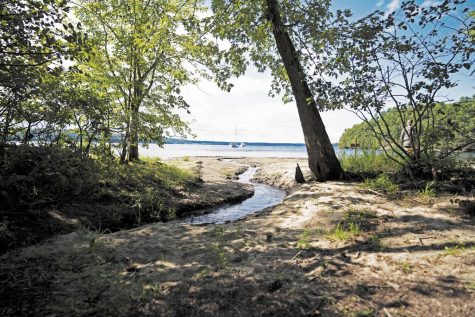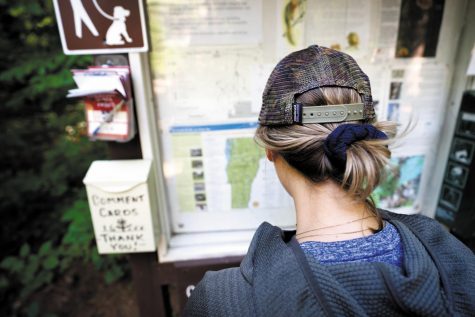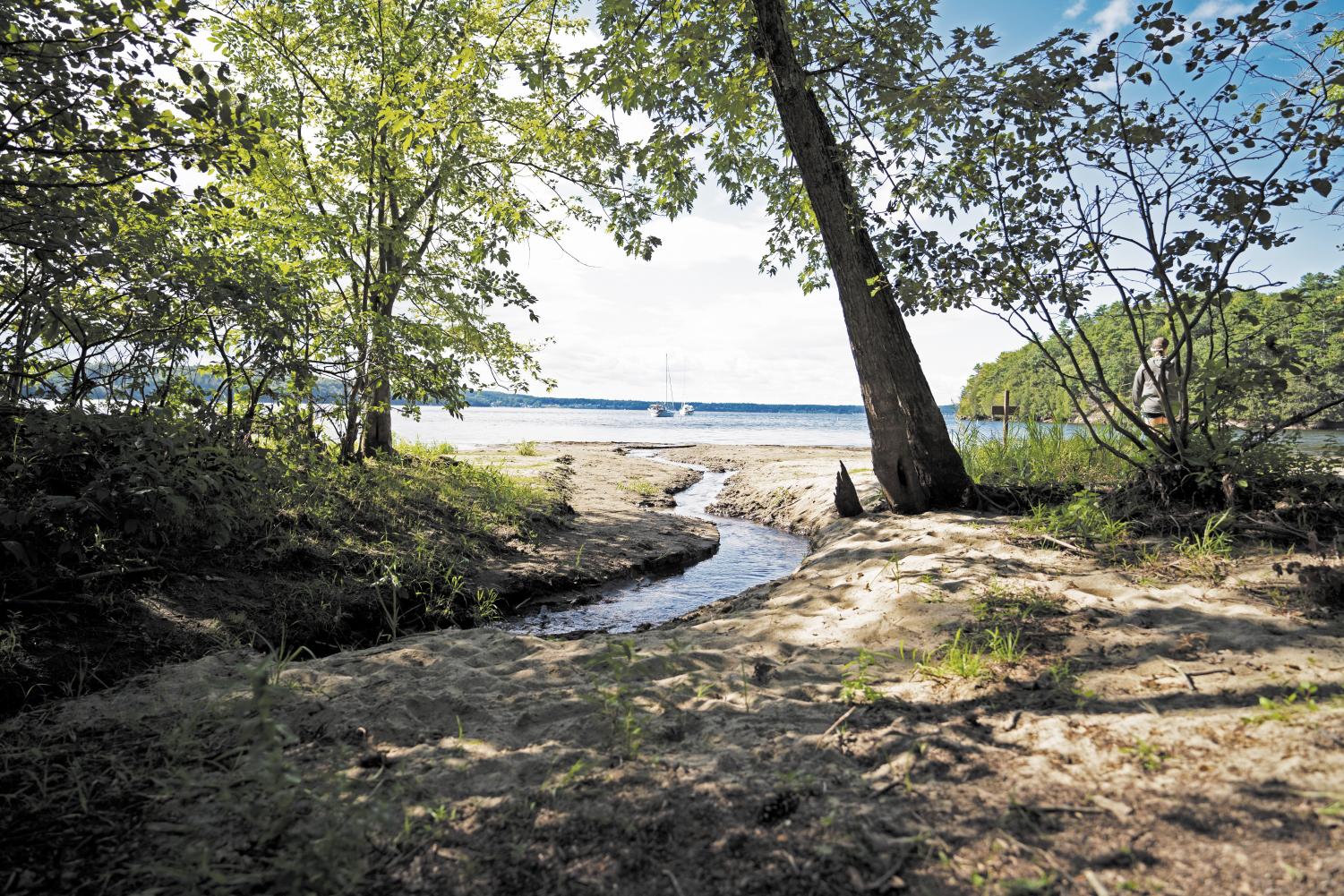Exploring the beauty of Vermont’s state parks
September 10, 2019
Tucked away behind the shadows of the state’s tallest peaks, blue waters, sandy shores and luscious greenery are the natural spectacles of Vermont State Parks.
Vermont currently maintains 52 developed state parks and 21 undeveloped properties spanning from the Northeast Kingdom to the islands of Lake Champlain.

A small stream leads to a cove at the Niquette Bay State Park in Colchester, VT. The park offers sweeping views of Lake Champlain from its cliffs and a number of trails to explore.
Aside from hiking and camping, the parks encourage a wide variety of outdoor activities like mountain biking, fishing and boating.
According to the Vermont State Parks website, over 1 million people visited the parks system in 2018.
Park attendance has seen an overall increase in the past 10 years.
Standard day-use fees start at $4 for adults age 14 and older. Camping fees vary in cost depending on vehicle and site type, but most parks charge $18 per night at a standard tent and RV site.
In need of a weekend away from the mountain summit crowds, I took to the trails of two state parks to catch a glimpse of Vermont at a lower elevation.
Niquette Bay State Park Colchester, Vt.
Though Niquette Bay State Park is only a 25 minute drive from downtown Burlington, the ride pulled me out of the city’s concrete and traffic.
As I coasted down the interstate to the Milton and Colchester exit, I was surrounded by Vermont’s greenery, just a passing tease of the park’s lush canopy.
A drive down a quiet residential road gently guided me to the entrance of the park on the left.
Adorned with the familiar green and yellow lettered state park sign, Niquette Bay State Park provides hiking trails through a green and densely wooded forest with stunning views of Lake Champlain.
As I stood under the towering oak trees, my eyes traced the Allen Trail’s leisurely descent down to a natural valley to the glimmering lakeshore.
When I approached the sandy beach, the sailboats dotting the water in the bay came into view.
The picnic tables provided me a welcoming seat to enjoy the calming atmosphere of the lapping waves and cooling breeze of the lake.
Nearby, the Cedar Island Loop spanned over rocks and roots to the park’s peninsula and spectacular views of shoreline’s 60-foot cliffs.
Hikers swam in the brilliant blue waters of Calm Cove, which is nestled between cliffs of limestone rock.
Several trails wind through the oak and beech forest across beautiful overlooks that eventually led back to the gravel parking lot.
The park’s restrictions on biking and the lack of camping make this park perfect for a quiet stroll on weekday evenings or weekend mornings.
Niquette Bay is a great place for beginners.
The diversity in trails allow hikers to choose their difficulty and break a sweat without needing to drive very far into the mountains.
Little River State Park Waterbury, Vt.
Little River State Park is one of the most visited parks in Vermont, but its wide array of trails can make visitors feel like they have the park to themselves, even on weekends.
Visitors can take in the scenic views of Waterbury Reservoir by paddling the calm waters or swimming at one of the two beach areas.

The main road leads visitors to three different trailheads that send hikers off to the miles of trails and loops around Ricker Basin.
In the History Hike and Dalley Loop Trailhead parking area, I passed mountain bikers as they carefully secured their gear and packed their belongings before they flew up the gravel path.
Interactive signs along the trail informed me that in the 1800s, settlers cleared the hillside of Ricker Basin and developed a small network of farms.
I soon became immersed in the leftover evidence of former settlements.
The History Hike goes through old farmland that previously dominated the landscape.
Old stone walls that once divided the land line the trail, and the path itself used to be a road connecting the farms.
Eerie signs of life emerged as rusted metal and old farm equipment pile up along the trail.
Round cellar holes lined with moss-covered stones outline where structures used to stand tall.
Along the way, delicate birch trees huddle around community cemeteries and the tops of headstones peak over the low lying vegetation.
Though the hike mainly focuses on the historical aspect of the landscape, the park is rich in natural beauty.
The rest of the hike pleasantly weaves through a secondary forest and provides an insight into how vegetation is recolonizing the once cleared land.
The surrounding land fosters the growth of eastern white pine, white birch and quaking aspen.
Upon returning to the trailhead, I was pulled out of the past as I approached the car-filled parking lot.
After meeting their dogs, I chatted with other hikers about their own adventures of the day.
Driving away from the park felt bittersweet, as though I didn’t have enough time to explore every inch.
